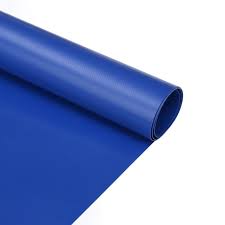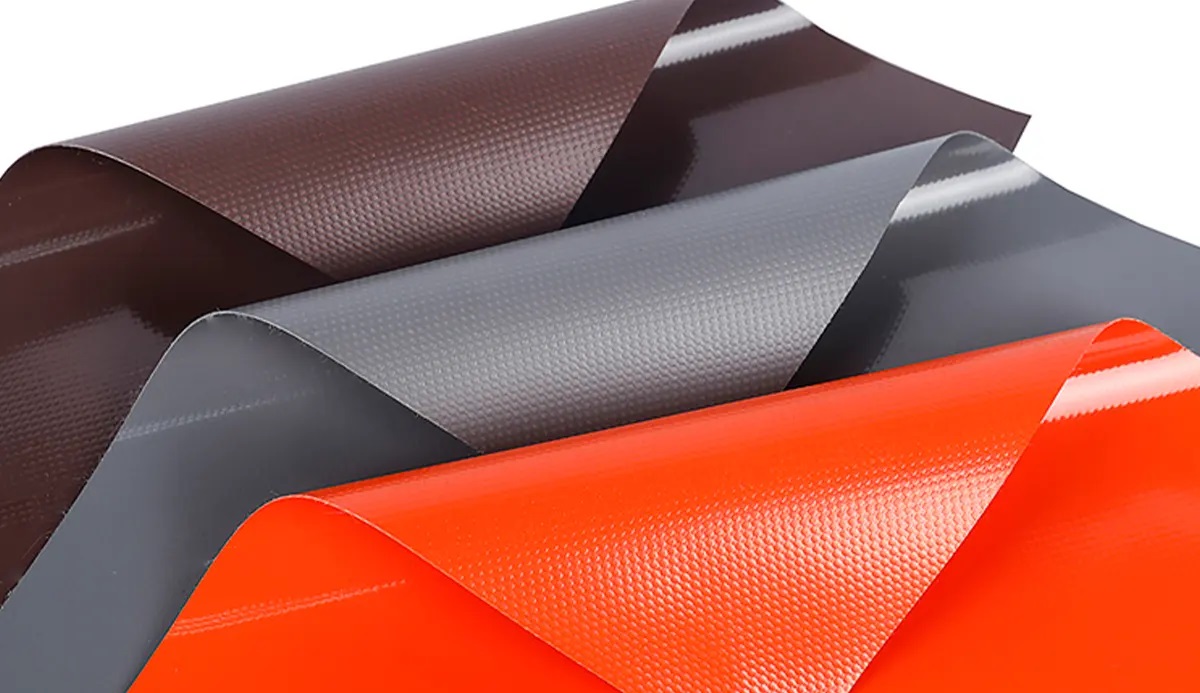Quality control of PVC knife coated tarpaulin
Quality control (QC) is a critical aspect of the production process for PVC knife coated tarpaulin to ensure that the final product meets the required standards and specifications. Below are the key steps and methods involved in the quality control process:
1. Raw Material Inspection
PVC Resin: Check for purity, particle size, and moisture content.
Plasticizers: Verify the type and quantity to ensure flexibility.
Stabilizers: Ensure they are appropriate for the intended use and environmental conditions.
Pigments and Additives: Confirm they meet the required specifications for color and performance.

2. In-Process Quality Control
Mixing: Ensure uniform distribution of all components.
Compounding: Monitor temperature, pressure, and homogeneity of the melt.
Calendering: Check the thickness, width, and surface finish of the PVC sheet.
Scraping: Inspect the texture and consistency of the scraped surface.
Cooling: Ensure proper cooling to prevent warping or deformation.

3. Final Product Inspection
Visual Inspection: Check for surface defects such as bubbles, cracks, or uneven coloring.
Thickness Measurement: Use calipers or ultrasonic thickness gauges to ensure uniform thickness.
Tensile Strength Test: Measure the tensile strength to ensure the tarpaulin can withstand the required loads.
Tear Resistance Test: Assess the resistance to tearing using standardized methods.
Adhesion Test: Check the bonding strength between the PVC layer and any reinforcing materials.
Flexibility Test: Ensure the tarpaulin remains flexible at low temperatures.
UV Resistance Test: Expose samples to UV light to check for color fastness and material degradation.
Water Resistance Test: Verify that the tarpaulin is impermeable to water.
Flame Retardancy Test: If applicable, test for flame resistance according to relevant standards.

4. Dimensional Accuracy
Length and Width: Ensure the tarpaulin meets the specified dimensions.
Edge Straightness: Check that the edges are straight and even.
Grommet Placement: Verify the correct placement and secure attachment of grommets.
5. Printing Quality (if applicable)
Color Consistency: Ensure the printed colors match the specified requirements.
Print Durability: Test for resistance to fading, scratching, and peeling.
6. Packaging Inspection
Proper Packaging: Ensure the tarpaulin is rolled or folded correctly and securely packaged.
Labeling: Verify that the packaging includes correct labels, including product specifications, batch numbers, and safety information.
7. Documentation and Traceability
Batch Records: Maintain detailed records of each production batch, including raw material details, processing parameters, and QC results.
Traceability: Ensure each tarpaulin can be traced back to its production batch for quality assurance and recall purposes.
8. Final Approval
QC Approval: Only PVC tarpaulins that pass all QC checks are approved for shipment.
Certification: Provide certificates of conformity or test reports if required by customers or regulatory bodies.
Key Considerations:
Sampling: Use statistical sampling methods to ensure representative testing of each batch.
Standards Compliance: Ensure all tests and inspections comply with relevant industry standards (e.g., ISO, ASTM).
Continuous Improvement: Regularly review and update QC procedures based on feedback and new industry developments.
By implementing a rigorous quality control process, manufacturers can ensure that their PVC coated tarpaulins meet the highest standards of quality and performance, thereby satisfying customer requirements and maintaining a strong market reputation.




